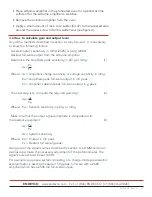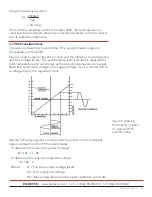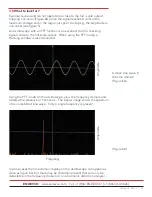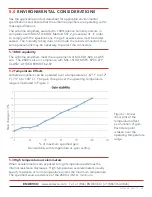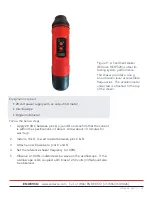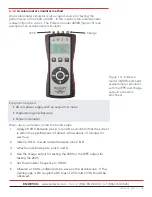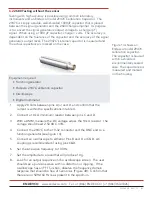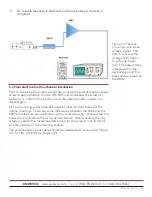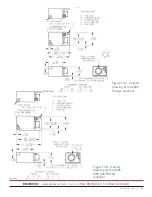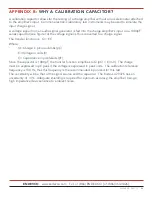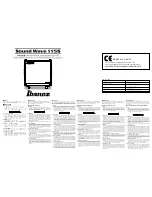
ENDEVCO
www.endevco.com Tel: +1 (866) ENDEVCO [+1 (866) 363-3826]
IM 2680/5 083119
25
APPENDIX A:
CABLE INSTALLATION RECOMMENDATIONS
The following recommendations are provided to help the users of Endevco cables and assemblies.
1
When attaching a coaxial cable assembly to
a transducer or the amplifier, always turn the
connector nut onto the transducer. Turning
the transducer or amplifier into the cable
connector may damage the pin, the cable, or
the transducer. Only finger tight to 1.5 in-lbs.
(0 169 Nm)
2
Always tie down the cable within 2 or 3
inches of the transducer. Whipping of the
cable will generate cable noise, strain the
cable unnecessarily at the connector, and cause
spurious signals in strain sensitive transducers.
3
When testing in a high humidity environment,
curl the cable into a drip loop near the
transducer and the airborne amplifier. Any
condensation that occurs will then be drawn away from the connector. Apply Dow-Corning
Silastic 732RTV adhesive sealant to connector threads and outer joints to prevent moisture
from entering the connector.
4
Always be certain that the cable connector is screwed finger tight, or to specifications. Do not
loose critical data because of a loose connector
5
When testing in a high humidity environment, curl the cable into a drip loop near the
transducer and the airborne amplifier. Any condensation that occurs will then be drawn away
from the connector. Apply Dow-Corning Silastic 732RTV adhesive sealant) to connector
threads and outer joints to prevent moisture from entering the connector.
6
Keep cable connectors and transducer receptacle clean by dipping them in a volatile solvent
before use. Freon, acetone, trichlorothane, or similar solvents may be used. Connector
contamination caused by ordinary handling can create low impedance paths between signal
and ground, increasing noise and affecting the low frequency response of the connected
amplifier.
7
If an intermittent signal is encountered and the cable is suspect, check the transducer/cable
interface. Flex the cable all along its length, particularly near the connector, and observe the
effect on the signal. Check center conductor and cable shield continuity with an ohmmeter.
8
Replace noisy the cable.
9
If you make your own connector-coaxial cable assemblies, cut and strip the cable carefully.
When using low-noise cable on the 2680, don’t smear the electrically conductive coating
across the dielectric.
10
Do not allow cable to be dropped, contaminated, stepped on or otherwise abused. Treat it as
carefully as you would treat your transducer.

